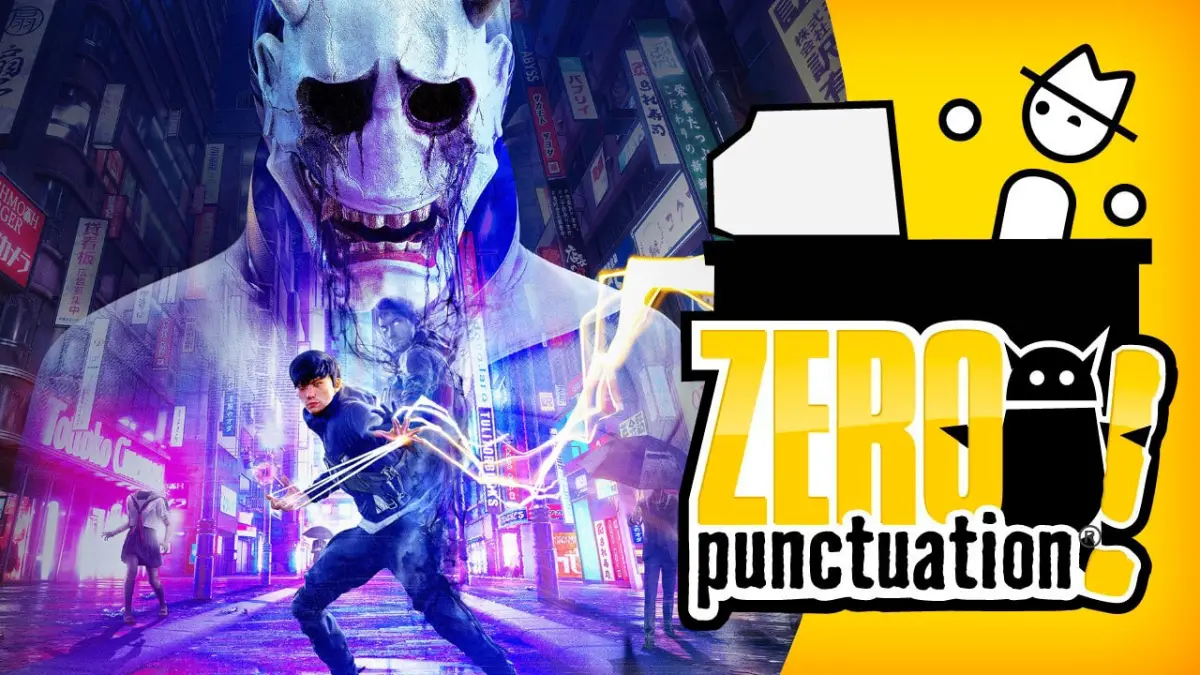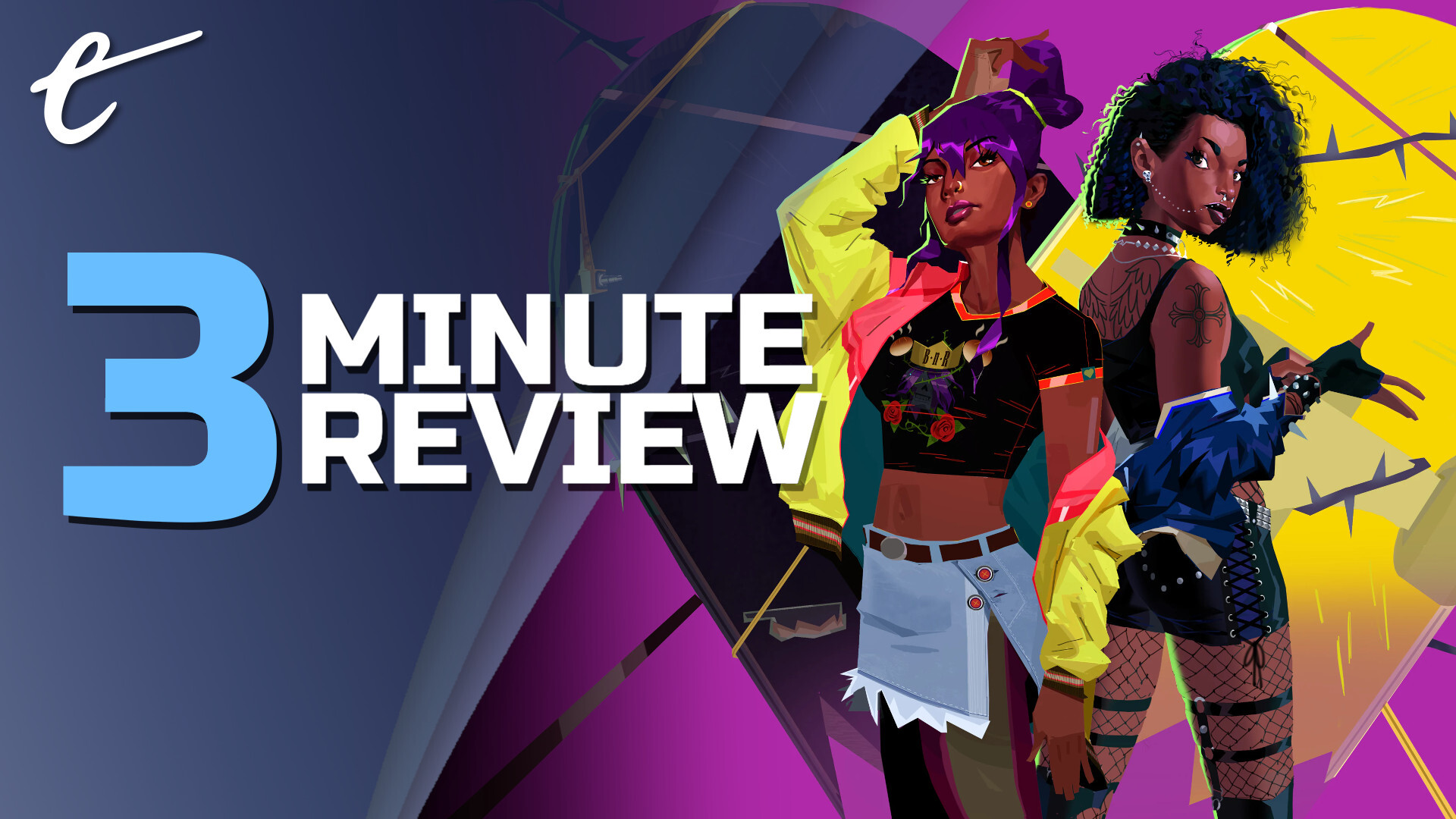People often say to me, “Yahtzee, you devilishly handsome sex god who certainly never recycles old gags he’s pretty sure most people would have forgotten by now, are there any particular upcoming games you’re looking forward to?” To which I say “Bitch, I have to play a new game every week. They all blur together. That’s like asking a drowning man if there’s any particular lungfuls of oxygen he’s looking forward to once he breaks surface. But to the extent that I look forward to anything, I was looking forward to Ghostwire Tokyo, because it was the new IP from Shinji Mikami’s studio. Who’s Shinji Mikami, you ask? Oh nobody much just the guy who made Resident Evil. And Resident Evil 4 and God Hand and Vanquish and the Evil Within and yet for all that doesn’t seem to have attained the rockstar status of a Miyamoto or a Kojima. I mean, I don’t even know what he looks like off the top of my head. Maybe that’s because he’s less focussed on self-promotion than on just being really bloody good at developing video games. So I just want to say that I appreciate you, Shinji Mikami, for all your years as a positive force for innovation in this ever stagnating industry. You’re one of the good ones. Now, what’s this new game about?
Well, it’s an open world stealth action game with collectibles and – OH FOR FUCK’S SAKE. I KNEW THEY’D GOTTEN TO YOU TOO YOU POD PERSON HACK. Yahtzee wait! I didn’t say crafting! There’s no crafting in it! Oh, well, strike up the band. The usual instrument of my torture has had its anal distention feature deactivated. Halle-fucking-lujah. Well, this is unfair. Ghostwire Tokyo does feel different to the current invasive crop of Jiminy Cockthroat. It feels older in its sensibilities, like a game that could’ve come out ten years ago. A specific one, actually: it reminds me of ZombiU. Remember that? From the way it’s a first person survival horror with slightly claustrophobic world design and possibly having been backhandedly funded by the tourist board of a specific city. Not that any contemporary Japanese game needs the excuse to spend its whole runtime pushing Japanese culture as much as it can, as I’ve observed before in reviews of Yakuza and Persona games. I always wonder how the Japanese audience feels about that as they read the item descriptions. “A Yukata is a traditional form of kimono commonly worn during summer festivals in Japan-” Yeah, we know, game, we all live here.
Anyway, in Ghostwire Tokyo we play as Akito, a young man who gets caught in a car accident, then the ghost of a dead asshole tries to steal his body, then everyone in Tokyo gets raptured except for him in an apocalyptic supernatural event and then the evil necromancer who did it kidnaps his comatosed sister. Fucking hell. What do Japanese people use as good luck charms? Maneki Nekos, thank you item description menu. Apparently Akito needed to buy about five hundred of the fuckers. Fortunately it turns out the dead asshole trying to possess him is a dead asshole paranormal detective, and so by combining his powers of magical exorcism with Akito’s powers of being alive and physically there the pair set off to fight the legions of evil spirits that now infest Tokyo, thwart the villain and rescue Princess Peach. Now, one word that in retrospect doesn’t really fit this survival horror game is “horror.” There’s no gore and it’s not scary. Yes, there’s some effectively creepy ghost design like the umbrella-wielding salarymen who look like Slenderman’s fussy dad but it’s hard to feel intimidated by them when you’re routinely sneaking up and obliterating them with atomic wedgies. It’s more of a supernatural detective stroke disaster thriller with first person shooter combat.
Actually, thinking about it, there’s not a great deal of “survival” in the survival horror, either. You attack by making magic finger guns that shoot a variety of elemental projectiles, and the game throws enough magic ammo at you to fill a public ball pit with staggeringly poor health and safety compliance. The scenery is infested with magic wibbly wobbly ammo-dispensing furniture and the monsters are all keeping emergency ammo refills in their eminently wedgie-able panties. And there’s no shortage of healing items, either, which here take the form of popular Japanese snack foods because of course they fucking do. Quite a bewilderingly large variety of them, as well, and I fear whatever benefit is gained from including every conceivable flavour of individually wrapped triangular rice ball was lost on me because I’d just mash the quick heal button whenever I needed it and Akito would scarf down the nearest food item to hand without so much as a glance at the packet. We could have been subsisting exclusively on dishwasher tablets for all I knew. The combat itself has its problems – the combination of dark murky environments with shaking sparkly neon-coloured snot off your fingers right next to your face makes it hard to follow the action at times.
And your projectiles lack a sense of satisfying impact. Water-based magic attacks in particular feel about as damaging as slinging a bucket of dishwater at an encroaching foe possibly could. But in the broader picture Ghostface Wartybum has a not atypical open world problem in that the core experience is not so much “survival” as “janitorial.” Once you’ve unlocked the whole map if we’re not doing critical path missions we’re just hopping from one copy pasted icon to the next hoovering up groups of enemies and random lost souls for experience and picking up pieces of collectible Japanese garbage in return for cash payouts that have next to no useful purpose unless you really really want to equip yourself with a cosmetic pair of traditional Japanese hi-tops that no one’s ever gonna fucking see because it’s a first person single player game, numbnuts. If you are keen on filling out one hundred percent completion checklists and have weird hangups stemming from when the teacher gave you a gold star for having the tidiest desk in the whole class and it was the only time you’ve ever known self esteem then perhaps you’ll find some appeal here, everyone else might find the gameplay kinda forgettable.
But there is something to be said for Ghostwire’s atmosphere. There’s a strong sense of place in its densely detailed realising of Tokyo’s claustrophobic urban sprawl, and there’s something appealingly haunting about exploring it in spooky abandoned form, a familiar realism overlaid with a sprinkling of supernatural intrigue, littered with omnipresent piles of spontaneously vacated clothing. Creating the implication that once you rescue everyone from the spirit world there’s going to be a lot of confused nudity in the streets of Tokyo which might be an appealing enough image to keep you motivated. It is, in a word, immersive. Until you realise you can just climb up to the rooftops and navigate everywhere by gliding from building to building like you’re playing extreme the floor is lava, but that’s entertaining on its own. So in the end I would describe Worst Gore Pinocchio as a decent enough six hour action adventure with nice imagery if generic gameplay and a big flabby open world hanging off it that’s questionably necessary unless you’re into virtual tourism. I mean, Google Street View’s all well and good but how else can one experience a real world city after it’s been abandoned but for shambling mobs of pale, hostile, perversions of humanity? Other than by being in Coventry city centre at three in the morning.






Published: Mar 23, 2022 12:00 pm